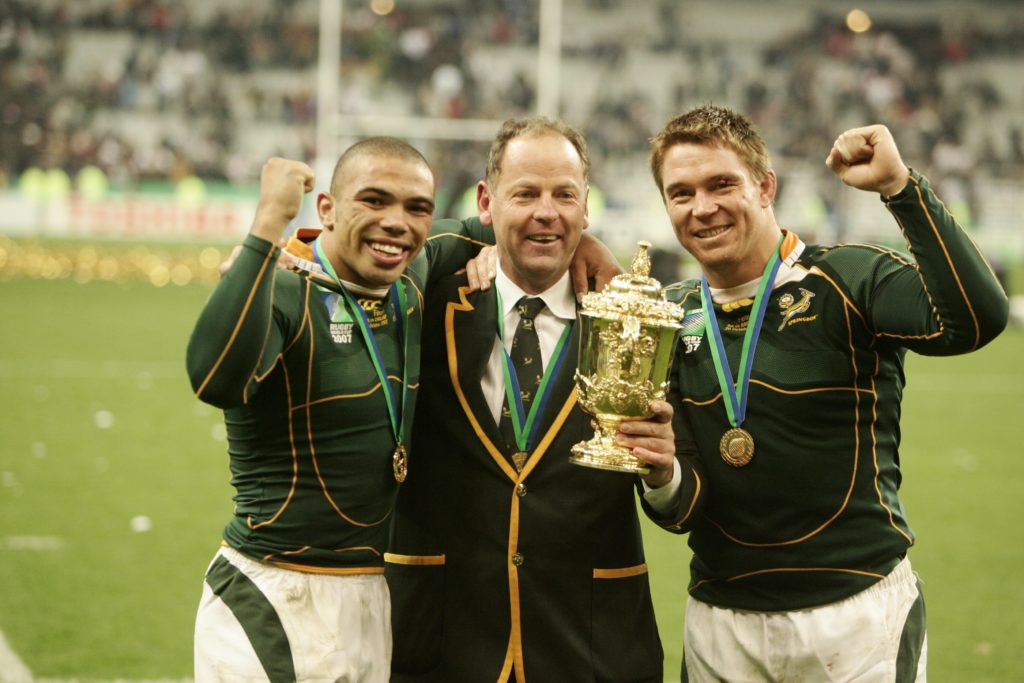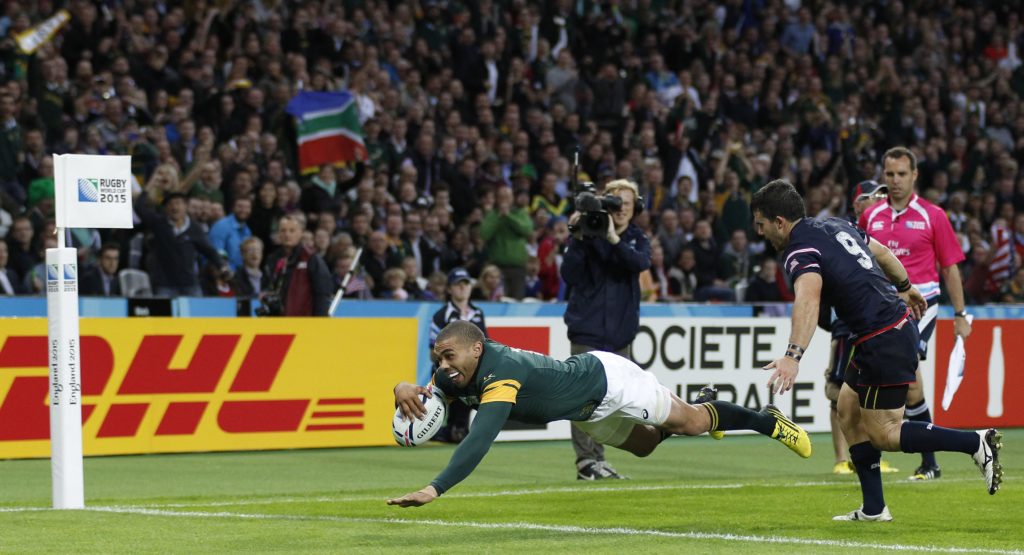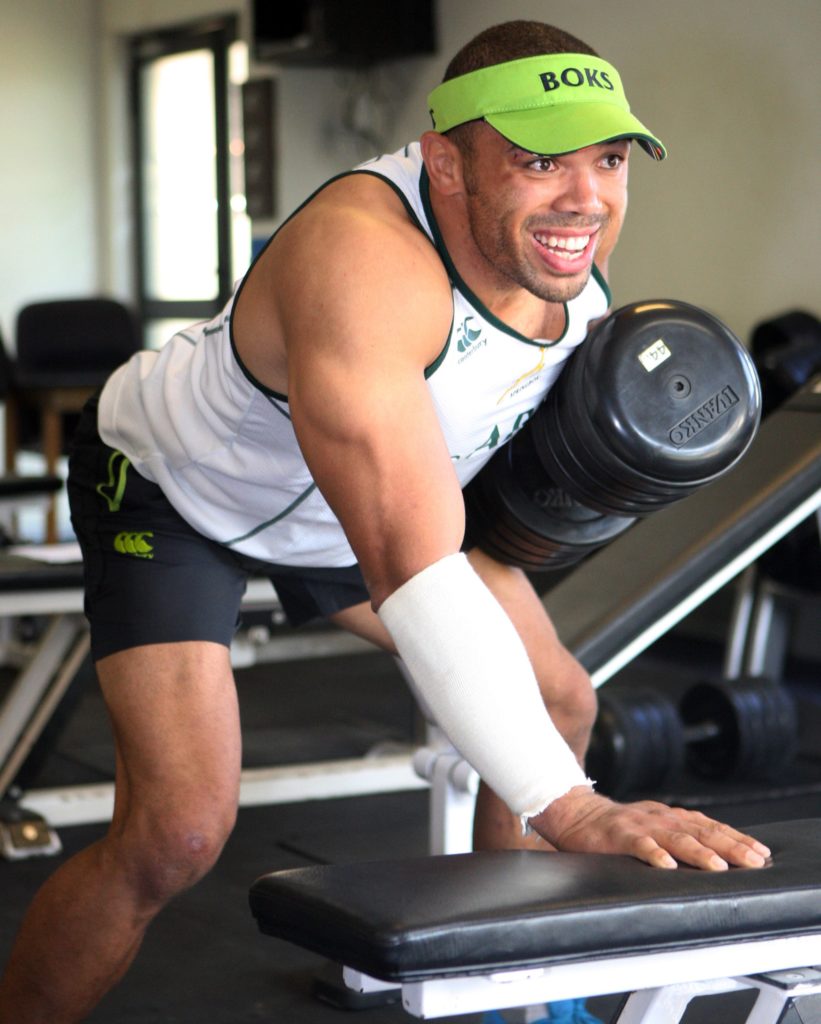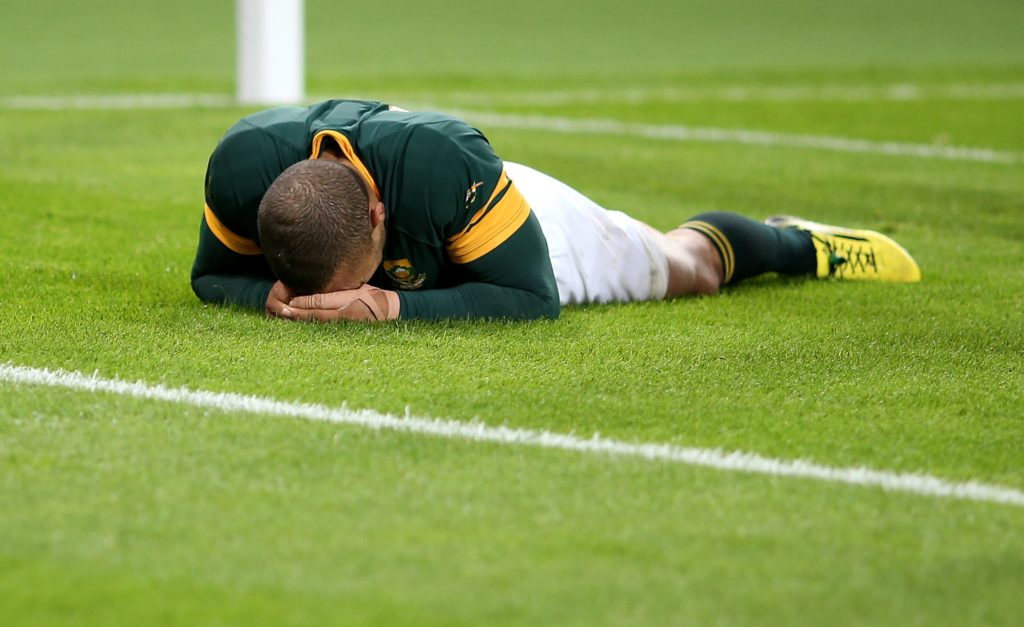WHEN Bryan Gary Habana – a 21-year-old optimistically named after former Manchester United players Bryan Robson and Gary Bailey – made his debut as a replacement for the Springboks against England in 2004, he was so nervous that he came perilously close to running on with his beanie still on.
At that very moment, few would have guessed that this bundle of nerves, almost tripping over itself to get on to the Twickenham turf, would retire as the leading Tier One nations tryscorer in the history of the game.
Not until he scored with his first touch of the ball in Test rugby anyway.
Due to the injuries to Jean de Villiers and Breyton Paulse that forced his hasty introduction at HQ, Habana went on to play against Scotland the next week, touching down twice in a landslide victory and setting the tone for a tryscoring career that would start as a sprint but span into a 124-Test marathon.
During that period – which included spells at the Lions, Bulls and Stormers franchises in South Africa and Toulon in France – Habana compiled a CV that is almost an exercise in name-dropping when it comes to what he has won.
For the sake of brevity, said achievements are easier listed than dropped in casual conversation: World Cup winner (check); World Rugby Player of the Year (check); Tri-Nations champion (check); British & Irish Lions series victor (check); World Rugby Try of the Year winner (check); two-time Super Rugby champ (check); two-time Champions Cup winner (check); Currie Cup (check); and Top 14 championship winner (you get the idea).

The road to those medals – which, by this writer’s estimation, put him in the top-five most decorated players in history – was paved with 181 tries from the 362 first-class games he played by the time he retired, an insane ratio of exactly one try every two games.
In amongst that heavy scoring is the milestone that dwarfs all landmarks: the 67 Test tries that make Habana nominally the second-highest tryscorer of all time in the game behind Japan’s Daisuke Ohata, although the Japanese winger did his best work against the might of Hong Kong during Japan’s Tier Two days.
The 15 World Cup tries, which tie him with the record of a certain Jonah Lomu, and the 56 Super Rugby scores placing him joint fifth on the all-time list, with Christian Cullen, Stirling Mortlock and Ma’a Nonu ahead of him, further embellish the idea of an ultimate finisher whose only currency was tries.
As Habana’s former captain, John Smit, said when the workaholic winger retired two years ago: “It was almost as if everything he did was aimed at helping him score.”
The irony is that Habana’s hard-earned reputation as a clinical finisher is something of a happy accident. Habana’s roots, in his junior playing days, were at the base of the scrum, where he was suitably diminutive and lippy without being what you’d call remarkable.
His ex-Lions coach Eugene Eloff was the one who turned Habana into an electric outside-centre with the acceleration of Sonic the Hedgehog, getting the ball rolling on one of the more consistently free-scoring careers in rugby.
It’s difficult because they say hindsight is the best vision, but I have no idea how my career would have turned out had I stuck it out at centre.
Habana himself admits that when he joined the Bulls from the Lions at the end of the autumn series that saw him make his Test debut, it was to partner the late Ettienne Botha, an inside-centre whose 18 tries in one Currie Cup season entered him into that club of best players not to play for the Boks.
But one of the three-time Super Rugby champions’ wingers would also break down in pre-season, forcing Habana to play out wide after telling Heyneke Meyer: “I have played wing for the Boks.” And with that, he was off.
To this day, Habana still wonders what might have been had he stayed at centre, although there are 164 reasons (the tries he scored as a winger) why he shouldn’t.
“I look at back at 124 Test matches, of which I played 123 on the wing, and the results weren’t too bad,” he says with a chuckle. “It’s difficult because they say hindsight is the best vision, but I have no idea how my career would have turned out had I stuck it out at centre.
“When I look at the likes of De Wet Barry and Marius Joubert, and Jean de Villiers and Jaque Fourie, I wonder if I would have been able to crack those combos. I’d love to believe I would have, but it’s difficult to say.”
That lone game at centre for the Springboks, against Ireland in Dublin in 2006, wasn’t a particularly happy one for Habana. A bit like the Bok team as a whole – whose game was made to look as outdated as their retro jerseys to celebrate the Springbok centenary by a rising Irish side – Habana looked rushed and uncomfortable the match.

But that probably had a lot to do with the fact that he was already an internationally renowned winger by then. The interesting thing is that he doesn’t remember going into an intensive finishing school, as it were, after making the change from centre.
“I did get to play centre against the Hurricanes with Ettienne, against Ma’a Nonu and Tana Umaga, so the move wasn’t a set-in-stone thing. I still wanted to play at centre but I just became really comfortable playing at wing,” he says.
“So I had to learn different things like where to position myself when working as a back-three player, things like the whole wings-on-strings principle, something I’d never had to do playing at centre. Obviously there were a few key things to learn, like catching the high ball… core fundamental skills, and to understand that I couldn’t just stand on my wing and wait for the ball.”
It came from having my team-mates around me, preparation, constantly working, not being happy with just being on the field and wanting to continually make a difference.
Asked why he thinks he scored so many tries in his career, Habana – who can be notoriously difficult to separate from his team in interviews – initially went the team route: “Erm, perspiration? That is key because a lot of those tries I can’t really account for, I’d say half those tries were made for me by other people.
“So being in the right place at the right time, which requires a little hard work and work ethic, was important. I didn’t always score tries on the one side of the field – I had to take quick taps and look for work as well.
“So it came from having my team-mates around me, preparation, constantly working, not being happy with just being on the field and wanting to continually make a difference.”
When told he can’t exactly credit his team-mates for leaving Rocky Elsom, George Gregan, Lote Tuqiri, et al choking in his dust while scoring the two tries in Perth (2005) that announced him and his searing speed to international rugby, Habana tries another tack to explain why he was so prolific.
I knew I needed to use my speed as best as possible, finding myself in unexpected positions where I could find mismatches. I was also more physical than my size permitted me to be.
“It’s a very difficult thing because if you look at me in comparison with other wingers, we’re very different,” he says. “I think it comes down to the individual and how that individual prepares. I wasn’t blessed with an incredible sidestep like Cheslin Kolbe.
“So I knew I needed to use my speed as best as possible, finding myself in unexpected positions where I could find mismatches. I was also more physical than my size permitted me to be – and that came down to an extreme love for the gym.

“But it’s a difficult question to answer because I can’t give anyone a clear set of defined things that they can do to become a world-class winger. I knew my speed and upper-body strength were important and I didn’t have a good actual running style, so I was able to use pure pace.”
Former Bulls and Springbok team-mate Akona Ndungane confirms Habana’s borderline demented work ethic, saying he was “always last to leave the practice field, working hard on his body and looking after it”.
The relentless work on his physique goes a long way towards explaining why watching Habana – thanks to the astonishing turn of pace you’d expect from a 10.40secs 100metres runner, and the kind of explosive strength you wouldn’t from a man measuring 1.80m and 94kg – always felt like witnessing a cartoon character at work, a bit like England’s Jason Robinson in his Billy Whizz pomp.
But Habana’s secret superpower was probably in the eyes. Few players advocate Dr Sherylle Calder’s Eye Gym (for improved peripheral vision) more than Habana.
Despite the fact that he was already one of those players who was as fleet of foot as he was of mind, meaning he could take in his surroundings and act on the information quicker than others, Habana says working with Calder on his hand-eye co-ordination was the game-changer for him.
The best way to sum it up is the one muscle that takes in all the information you need to process is potentially the one muscle we train the least.
“Working with Dr Calder played a part in me scoring a few more intercepts,” he says. “I only started working with her in 2005, so up until that point I’d never really worked on those skills. It was something that came naturally, but if you want to try to remain the best, you work on those fundamentals as much as you can.
“I think the best way to sum it up is the one muscle that takes in all the information you need to process is potentially the one muscle we train the least. You go to the gym, train your biceps or chest, or do speed drills, so why aren’t you training the one muscle that helps you process information?
“There were times when I wasn’t doing Eye Gym and I probably wasn’t as effective as I could have been. Whenever I got back to working with Dr Calder, I was. Sure I had it (good peripheral vision) naturally, but it’s easier at centre, where you get your hands on the ball a lot, but not the same at wing.”
The rewards of Habana’s Eye Gym work were evident in what appeared to be an undeclared intercept try competition with former Springbok team-mate De Villiers throughout his career, the most notable example being when his old skipper Smit turned to him and asked him to “go fetch me a try” during the World Cup semi-final against Argentina in 2007.
Asked if he had a signature try, Habana couldn’t decide between the vapour-trail long-distance efforts, the intercept tries, the relative tap-ins of being on hand to round off a move and that chip-kick he developed mid-career.
Former Springbok coach Jake White puts the varied methods of scoring down to that famed work ethic: “He didn’t have the whole set of skills when he started but he ended up being the best player he could be – he couldn’t chip-kick when he started but by the end he could do it with both feet.
“He never stopped trying to be better.”

Looking back at the many times he flopped over the whitewash, Habana has five favourite tries.
The first is the 2005 stunner against the Blues, when he gathered a kick-off from inside his 22, outflanked three defenders down the wing and chipped the last one to score; his aforementioned debut try; the intercept try against Argentina as it tied Lomu’s tally for a single World Cup; his World Rugby Try of the Year effort; and the Super Rugby title winner against the Sharks.
It speaks volumes for his dependability under pressure that he can only remember one try he feels was the one that got away – a botched effort against the USA at the 2015 World Cup that would have meant the tryscoring record in that tournament was his alone.
It’s only at the very end of this interview that Habana gives a glimpse of the greedy streak he has to have been in possession of to score that many tries. The question that catches him somewhat with his guard down is innocuous enough – is he fine with the idea of being recognised as the second-highest tryscorer in Test history, behind Ohata?
“No, no, no, no, not at all,” says the former Springbok winger, which is about as unequivocal as you can get from a man without a politically incorrect bone in his body. “It grates me, it completely grates me…”
More South Africa stories
If you’ve enjoyed this article, please share it with friends or on social media. We rely solely on new subscribers to fund high-quality journalism and appreciate you sharing this so we can continue to grow, produce more quality content and support our writers.


Comments
Join free and tell us what you really think!
Sign up for free